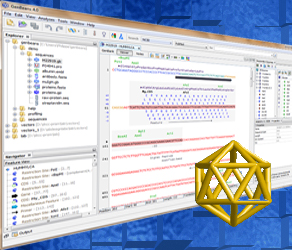ADVERTISEMENT
Post-Translational Modifications
Databases
The RESID Database of Protein Modifications is a comprehensive collection of annotations and structures for protein modifications including amino-terminal, carboxyl-terminal and peptide chain cross-link post-translational modifications.
O-GLYCBASE is a revised database of O- and C-glycosylated proteins.
N-Terminal Modifications
TermiNator predicts N-terminal methionine excision, N-terminal acetylation, N-terminal myristoylation and S-palmitoylation of either prokaryotic or eukaryotic proteins originating from organellar or nuclear genomes .
Acetylation
NetAcet 1.0 server predicts substrates of N-acetyltransferase A (NatA).
Lysine Glycation
Glycation of epsilon amino groups of lysines in mammalian proteins
Mannosylation
Predictions of C-mannosylation sites in mammalian proteins.
Methylation
MeMo is a protein methylation prediction server based on SVM (support vector machine). Limited by available training data on Arginine and Lysine sites.
Myristoylation
Myristoylator predicts N-terminal myristoylation of proteins by neural networks. Only N-terminal glycines are myristoylated (leading methionines are cleaved prior to myristoylation).
N-terminal N-Myristoylation of Proteins
N-Glycosylation
Predicts N-Glycosylation sites in human proteins using artificial neural networks that examine the sequence context of Asn-Xaa-Ser/Thr sequons.
O-Glycosylation
Predictions of mucin type GalNAc O-glycosylation sites in mammalian proteins.
Predictions for GlcNAc O-glycosylation sites in Dictyostelium discoideum
O-beta-GlcNAc attachment sites in eukaryotic protein sequences. The YinOYang WWW server produces neural network predictions for O-
O-GLYCBASE is a revised database of O- and C-glycosylated proteins. The criteria for inclusion are at least one experimentally verified O- or C-glycosylation site.
S-Nitrosylation
S-Palmitoylation
Phosphorylation
The NetPhos 2.0 server produces neural network predictions for serine, threonine and tyrosine phosphorylation sites in eukaryotic proteins.
The NetPhosK 1.0 server produces neural network predictions of kinase specific eukaryotic protein phosphoylation sites. Currently NetPhosK covers the following kinases: PKA, PKC, PKG, CKII, Cdc2, CaM-II, ATM, DNA PK, Cdk5, p38 MAPK, GSK3, CKI, PKB, RSK, INSR, EGFR and Src.
NetPhosYeast 1.0 server predicts serine and threonine phosphorylation sites in yeast proteins.
PhosphoMotif Finder contains known kinase/phosphatase substrate as well as binding motifs that are curated from the published literature. It reports the PRESENCE of any literature-derived motif in the query sequence.
Prediction of S/T residues which are phosphorylated by protein kinase A (PKA)
Phospho.ELM is a database of experimentally verified phosphorylation sites in eukaryotic proteins.
Phospho3D is a database of three-dimensional structures of phosphorylation sites which stores information retrieved from the phospho.ELM database and which is enriched with structural information and annotations at the residue level.
New version of kinase-specific phosphorylation site prediction tool that is based the sequenece-based amino acid coupling-pattern analysis and solvent accessibility as new features of SVM (support vector machine).
Predikin is a system to predict the substrates of protein kinases.
GPS 2.0, a Tool to Predict Kinase-specific Phosphorylation Sites in Hierarchy.
The Phosphorylation Site Database provides ready access to information from the primary scientific literature concerning proteins in prokaryotic organisms (i.e. members of the domains Archaea and Bacteria) that undergo covalent phosphorylation on the hydroxyl side chains of serine, threonine, and/or tyrosine residues.
Prenylation
Prenylation Prediction Suite: Protein CaaX Farnesylation, CaaX Geranylgeranylation and Rab Geranylgeranylation
Sumoylation
Tyrosine Nitration
Tyrosine Sulfation
The Sulfinator predicts tyrosine sulfation sites in protein sequences
Ubiquitination
Prediction of Ubiquitination site with Bayesian Discriminant Method.
The Web Bench
The Web Bench
is the essential companion to the biologist, bringing informational resources and a collection of tools & calculators to facilitate work at the bench and analysis of biological data.
Check out the full online bench here
Check out the full online bench here
Sequence Analysis with GenBeans
 Try GenBeans: Best free software for DNA sequence editing!
Try GenBeans: Best free software for DNA sequence editing!
FEEDBACK
Your comments & your suggestionsare appreciated. Please, notify us for resources and tools that you would like to see on this bench!





